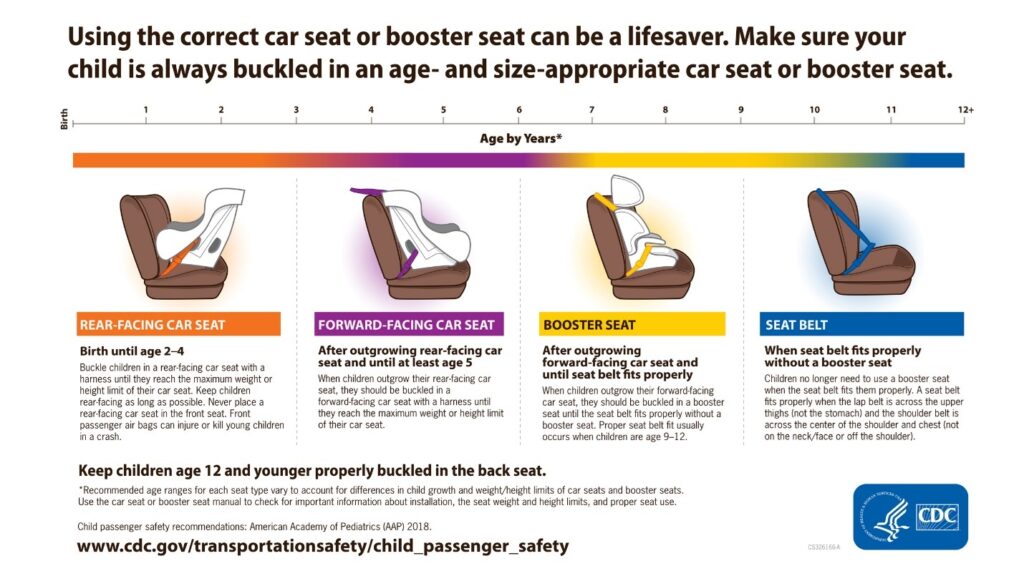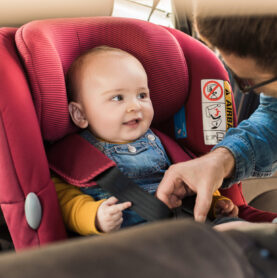We all know that buckling up before driving is imperative to our safety as drivers and passengers. The same goes for children, who require an appropriately sized car seat or booster seat. Proper installation and use of this safety feature goes a long way to protect children while riding in a vehicle.
Motor vehicle injuries are a leading cause of death among children in the United States, according to the Centers for Disease Control and Prevention, but many of these deaths can be prevented. By using age- and size-appropriate car seats, booster seats, and seat belts, instances of serious and fatal injuries are reduced by up to 80%. Use the graphic below to understand the correct installation and style of car seat or booster seat for each age group.

Infants and toddlers under age 4 should be buckled in a rear-facing car seat with a harness until they reach the weight or heigh limit of their car seat. Never place a rear-facing car seat in the front seat because the airbags could severely injure or kill the child in the event of a crash. Click here for a video by the California Highway Patrol to ensure you’re installing and using the car seat correctly.
Children who outgrow the rear-facing car seat should be buckled into a forward-facing car seat with a harness until at least age 5. Once they outgrow this seat, the child should be placed in a forward-facing booster seat that’s buckled into the seat. When the child outgrows the booster seat, usually around age 9-12, they may use a seat belt without a booster seat. Children under age 12 should sit in the backseat.
Of the children 12 and younger who died in a crash, the CDC reports 38% were not buckled up. Parents and caregivers can make a lifesaving decision by ensuring their child is properly buckled on every trip.
When compared with use of a seat belt alone, car seat use reduces the risk for injury in a crash by up to 82% for children. A booster seat reduces the risk for serious injury by 45% for children age 4 to 8, when compared with seat belt use alone. For older children and adults, seat belt use reduces the risk for death and serious injury by about half, the CDC states.
All passengers should wear seatbelts while driving, not only to serve as a good example, but to protect themselves in the event of a crash.
Here is more information about safe car seat usage. To find free car seats and training programs, click here to view a comprehensive list of counties across CA.
Check out Target’s car seat trade-in program, where you can turn in old car seats in exchange for a coupon to shop.


